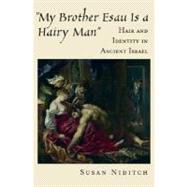"My Brother Esau Is a Hairy Man" Hair and Identity in Ancient Israel
, by Niditch, Susan- ISBN: 9780195181142 | 019518114X
- Cover: Hardcover
- Copyright: 4/18/2008
The story of Jacob and Esau is told in the book of Genesis. With his mother's help, Jacob impersonates his hairy older twin by dressing in Esau's clothes and covering his own hands and the nape of his neck with the hairy hide of goats. Fooled by this ruse, their blind father, Isaac, is tricked into giving the younger son the blessing of the firstborn. This is only one of many biblical stories in which hair plays a pivotal role. In recent years, there has been an explosion of scholarly interest in the relationship between culture and the body. Hair plays an integral role in the way we represent and identify ourselves. The way we treat our hair has to do with aesthetics, social structure, religious identity, and a host of other aspects of culture. In societies modern and ancient, the hairdo is one key to a group's cultural code. In ancient Israel, hair signifies important features of identity with respect to gender, ethnicity, and holiness. Susan Niditch seeks a deeper understanding of Israelite culture as expressed, shaped, and reinforced in images of hair. Among her examples is the tradition's most famous long-haired hero, Samson. The hair that assures Samson's strength is a common folktale motif, but is also important to his sacred status as a Nazirite. Niditch examines the meaning of the Nazirite identity held by Samuel as well as Samson arguing that long hair is involved in a complex set of cultural assumptions about men, warrior status, and divine election. In addition to biblical texts, Niditch looks at pictorial and other material evidence. She concludes by examining the troubling texts in which men impose hair cutting or loosening upon women, revealing much about attitudes to women and their place in Israelite culture. Much has been written on the presentation of the body in various literatures, including the Bible, but the role of hair in ancient Israel has been neglected. This book charts a new path for studies on the body, religion, and culture.







